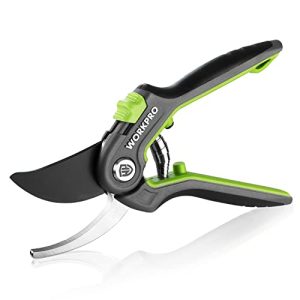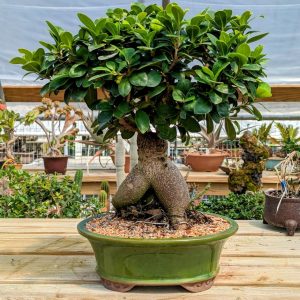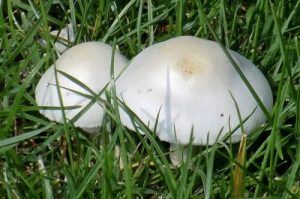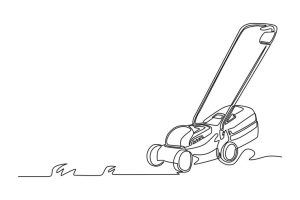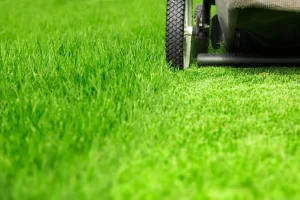Starting seedlings indoors is exciting, but knowing when to fertilize them can be tricky. Fertilizing too early or too late can harm your young plants.
You want your seedlings to grow strong and healthy, right? This guide will help you understand the perfect timing to feed your seedlings. Keep reading to discover simple tips that will give your indoor garden the best start possible. Your green thumb is about to get even better!
Seedling Growth Stages
Growing seedlings indoors needs careful attention. Fertilizing at the right time helps plants grow strong.
Knowing the growth stages of seedlings guides when to add nutrients. This keeps plants healthy and ready for transplant.
From Germination To True Leaves
Seedlings start by sprouting from seeds, called germination. This stage lasts until the first leaves appear.
After germination, seedlings grow their first true leaves. These leaves look different from the first small seed leaves.
Do not fertilize during germination. Seedlings get enough nutrients from the seed itself.
Start light fertilizing once true leaves develop. Use a diluted, balanced fertilizer to avoid burning young roots.
Key Indicators For Fertilizing
Look for signs that seedlings need extra nutrients. Healthy growth signals when to feed your plants.
- True leaves have fully formed and are green
- Seedlings stop growing or look pale
- Soil dries quickly but plants still need water
- Roots start filling the container
Use these indicators to decide the right time to fertilize. Avoid overfeeding to keep seedlings healthy.

Credit: savvygardening.com
Choosing The Right Fertilizer
Fertilizing seedlings indoors helps young plants grow strong. Picking the right fertilizer is very important. It gives seedlings the nutrients they need.
Seedlings are delicate and need gentle care. Using the wrong fertilizer can hurt their growth. Learn what types of fertilizers work best for seedlings.
Types Of Fertilizers For Seedlings
There are several fertilizers for seedlings. Liquid fertilizers work fast and are easy to control. They mix with water and feed plants directly.
Slow-release fertilizers give nutrients over time. They reduce the risk of overfeeding. Organic fertilizers come from natural sources and improve soil health.
- Liquid fertilizers: quick nutrient delivery
- Slow-release fertilizers: steady feeding
- Organic fertilizers: natural and gentle
Balancing Nutrients For Young Plants
Seedlings need a balance of nitrogen, phosphorus, and potassium. Nitrogen helps leaves grow green and strong. Phosphorus supports root growth. Potassium helps plants resist disease.
Too much fertilizer can burn seedlings. Use a diluted mix to avoid this. Check fertilizer labels for nutrient ratios like 10-10-10 or 5-10-5. Choose a mix with less nitrogen for seedlings.
- Nitrogen (N): leaf growth
- Phosphorus (P): root development
- Potassium (K): overall health
- Use diluted fertilizer to protect seedlings
Signs Seedlings Need Feeding
Seedlings need food to grow strong and healthy. Knowing when to feed them helps avoid weak plants.
Watch your seedlings closely. Look for signs that show they need nutrients to keep growing well.
Visual Clues In Seedling Health
Look at the leaves and stems for changes. Yellowing or pale leaves often mean your seedlings need feeding.
Slow growth and thin stems also show a lack of nutrients. Seedlings should look bright and sturdy.
- Yellow or pale leaves
- Slow or stunted growth
- Thin or weak stems
- Leaves curling or dropping
Soil And Root Conditions
Check the soil for dryness or poor texture. Nutrient-poor soil can cause seedlings to suffer.
If roots look small or weak, your seedlings need feeding. Healthy roots grow thick and spread well.
- Soil feels dry or dusty
- Soil lacks crumbly texture
- Roots are thin or pale
- Roots do not spread well
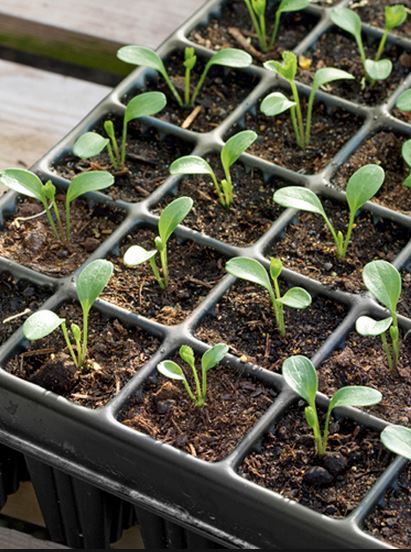
Credit: boyerts.com
Optimal Fertilizing Schedule
Fertilizing seedlings indoors helps them grow strong and healthy. It is important to know the right time and amount to feed them.
Too much fertilizer can harm seedlings, while too little slows growth. Follow a clear schedule for best results.
Frequency And Timing Tips
Start fertilizing seedlings about two weeks after they sprout. This gives them time to develop their first true leaves.
Feed seedlings every 1 to 2 weeks. Avoid fertilizing too often to prevent root burn.
- Wait until seedlings have 2-3 sets of true leaves
- Use a light feeding schedule every 7 to 14 days
- Stop fertilizing a week before transplanting
Adjusting Fertilizer Strength
Use a diluted fertilizer solution to protect young roots. Start with half the strength recommended for mature plants.
Increase fertilizer strength gradually as seedlings grow. Stronger solutions help older seedlings get more nutrients.
- Begin with 25-50% of the normal fertilizer strength
- Raise strength to 75% after a few weeks
- Never use full strength on very young seedlings
- Watch seedlings for signs of overfeeding like yellow leaves
Common Fertilizing Mistakes
Fertilizing seedlings indoors helps plants grow strong. Doing it wrong can harm young plants.
Many gardeners make mistakes with fertilizer amounts and timing. These errors can slow growth or damage seedlings.
Overfertilizing Risks
Giving seedlings too much fertilizer can burn their roots. This stops them from taking up water and nutrients well.
Overfertilizing can cause leaves to turn yellow or brown. It can also make seedlings weak and stunted.
- Root damage from salt buildup
- Leaf burn and discoloration
- Slow or stopped growth
- Increased risk of disease
Underfeeding Consequences
Not giving enough fertilizer means seedlings lack important nutrients. This leads to poor growth and weak plants.
Seedlings may have pale leaves and thin stems if underfed. They may also be more sensitive to pests and stress.
- Slow growth and small size
- Pale or yellow leaves
- Weak stems that bend easily
- Lower resistance to pests
Additional Care For Indoor Seedlings
Growing seedlings indoors needs more than just planting seeds. They need the right care to grow strong and healthy.
Fertilizing is important, but seedlings also need proper water, light, temperature, and humidity.
Watering And Light Requirements
Seedlings need regular watering but not too much. Keep the soil moist, not soaked. Overwatering can cause root rot.
They also need plenty of light to grow strong. Use a sunny window or grow lights to give 12 to 16 hours of light daily.
- Water seedlings when the top soil feels dry
- Use a spray bottle to avoid washing seeds away
- Place seedlings near a bright window or use grow lights
- Keep lights 2 to 4 inches above the seedlings
Temperature And Humidity Factors
Seedlings grow best in warm temperatures. Keep the room between 65°F and 75°F for healthy growth.
Humidity helps seedlings stay moist. Use a humidity dome or mist the plants to keep air moist around them.
- Maintain temperature between 65°F and 75°F
- Use a humidity dome to keep moisture in
- Mist seedlings daily if air is dry
- Avoid placing seedlings near cold drafts or heaters

Credit: www.reddit.com
Frequently Asked Questions
When Should I Start Fertilizing Seedlings Indoors?
Begin fertilizing seedlings indoors once they have developed their first true leaves. This is usually around two to three weeks after germination. Use a diluted, balanced liquid fertilizer for best results. Be cautious not to over-fertilize, as this can harm young plants.
How Often Should I Fertilize Indoor Seedlings?
Fertilize indoor seedlings every two weeks using a diluted solution. Consistent fertilization supports healthy growth and development. Monitor your seedlings for signs of nutrient deficiencies, and adjust the frequency if needed. Always follow the instructions on your fertilizer package for best results.
What Type Of Fertilizer Is Best For Seedlings?
A balanced, water-soluble fertilizer is ideal for seedlings. Look for a product with equal parts nitrogen, phosphorus, and potassium. Dilute the fertilizer to half-strength to avoid burning young roots. Organic fertilizers are also an excellent choice for promoting healthy growth in seedlings.
Can Over-fertilizing Harm Indoor Seedlings?
Yes, over-fertilizing can harm seedlings by causing nutrient burn. This results in yellowing leaves and stunted growth. Always use a diluted fertilizer solution and follow recommended application rates. If you notice signs of over-fertilization, flush the soil with water to remove excess nutrients.
Conclusion
Seedlings need fertilizer after their first true leaves appear. Use a gentle, diluted fertilizer to avoid burning roots. Feeding too early can harm young plants. Regular feeding helps seedlings grow strong and healthy. Watch your plants closely for signs of hunger.
Give nutrients in small amounts for best results. Healthy seedlings lead to better garden plants later. Keep it simple, steady, and careful. Your indoor garden will thank you.


